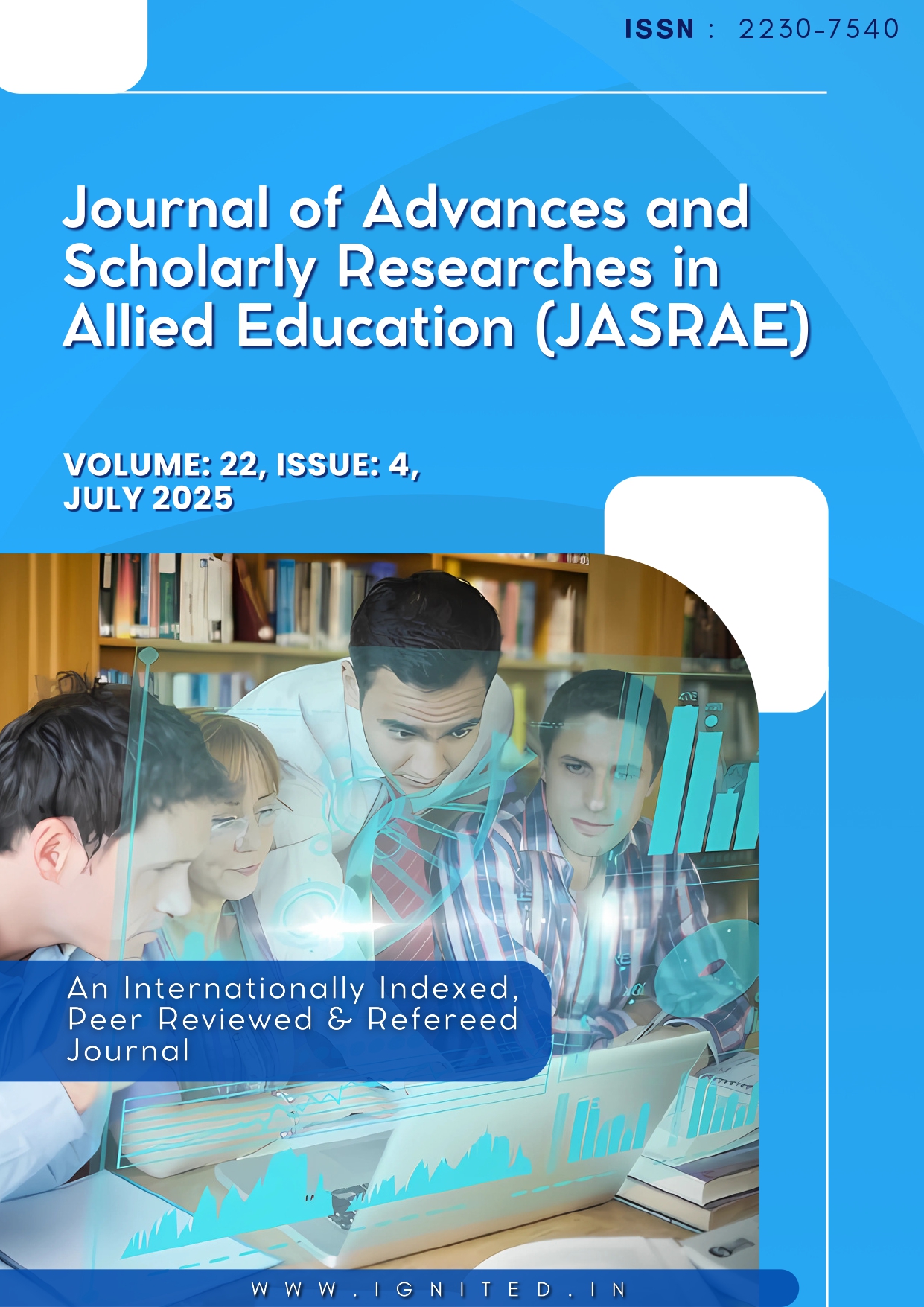Legacies of Colonialism and the Path to Decolonization: Comparative Insights from Patna’s Historical Sites and Global Counterparts
DOI:
https://doi.org/10.29070/fr035b18Keywords:
Post-colonial heritage, collective memory, cultural resilience, monument reinterpretation, decolonization policiesAbstract
This paper This article examines the changing value of monuments that date back to the colonial era in Patna, India, using a comparative lens that also covers the change of heritage in Kenya, Malaysia, and the Caribbean through analogous processes. It analyses the ways in which these once colonial buildings have been reinterpreted in post-independence countries, transitioning from being emblems of imperial power to becoming agents of cultural resilience, public memory, and identity creation. The research takes a critical look at important landmarks in Patna, such as the Patna Collectorate, Golghar, and Gandhi Maidan, and compares them to other monuments in the world, such as the Mau Mau memorials and railway museums in Kenya, the municipal buildings and museums in Malaysia, and the plantation estates and military forts in the Caribbean.
The research finds recurrent patterns that are present in all of these places. These patterns include grassroots resistance to erasure, practices of selective remembering, and conflicts between the growth of tourism and the revelation of historical truths. The complicated role that heritage plays in the process of nation-building and post-colonial governance is further highlighted by the fact that there are differences in the reactions of institutions, the levels of community engagement, and the policy frameworks. Using archival research, scholarly literature, and international heritage policy papers, the study underlines the need for methods to monument preservation and reinterpretation that are more inclusive and attentive to the environment in which they are being implemented.
For the purpose of fostering transnational understanding, the report suggests the incorporation of heritage education into school curriculum, participatory urban planning models that integrate community perspectives, and the use of heritage in cultural diplomacy. In the end, it makes the case that monuments are not static remnants of the past but rather dynamic platforms that communities use to debate identity, justice, and memory in a world that is decolonising.
References
Bryan, C. (2022). Plantation tours and decolonial gaps in Caribbean heritage. Journal of Island Histories, 7(1), 59–74.
Chakravarty, D. (2019). Spaces of protest and pride: Post-colonial reinterpretation of Gandhi Maidan. Urban Identity Studies, 6(2), 88–103.
Cheong, N. (2019). Reframing colonial narratives in Malaysian museums. Museology and Memory Studies, 6(3), 92–107.
Clarke, L. (2021). Forts, freedom, and the forgotten: Reclaiming resistance narratives in Barbados. Caribbean Memory and Culture Review, 8(2), 91–107.
Dias, P. (2022). Community-centered conservation: Policy trends in South Asian heritage planning. Journal of Urban Cultural Policy, 9(2), 141–157.
Gikonyo, T. (2020). Reimagining railway heritage: The Nairobi Museum and postcolonial curation. African Historical Perspectives, 6(1), 57–73.
Grant, T. (2018). From empire to exhibit: Transforming plantation estates into public memory spaces. Caribbean Historical Studies, 6(3), 133–149.
Henry, L. (2022). Museums, memory and decoloniality: Reimagining Caribbean heritage. Cultural Transformation Studies, 6(3), 79–94.
Howell, N. (2020). Tourism, trauma, and transformation: The case of Rose Hall. Postcolonial Heritage Journal, 5(4), 88–102.
ICOMOS. (2018). Heritage and democracy: Global recommendations on inclusive conservation practices. Retrieved from https://www.icomos.org/en/what-we-do/publications/heritage-and-democracy
Ismail, R. (2022). Heritage, politics, and identity: Museum reform in postcolonial Malaysia. Southeast Asian Cultural Review, 9(1), 48–63.
Javed, M. (2022). Public spaces and political memory: The evolving role of Gandhi Maidan in Patna. South Asian Cultural Review, 10(1), 54–70.
Kale, T. (2018). Civic architecture and colonial identity in British India. South Asian Historical Review, 4(1), 33–49.
Karanja, F. (2021). Grassroots memorials and the politics of memory in Kenya. East African Memory Studies, 9(2), 102–118.
Kumar, R. (2018). Contested heritage: The Patna Collectorate and debates on colonial preservation. Heritage Discourse Journal, 5(3), 122–138.
Latif, H. (2021). The transformation of Sultan Abdul Samad Building and the politics of heritage. Malaysian Urban Histories, 7(2), 66–82.
Lewis, J. (2019). Commodifying the colonial past: Tourism and memory at Caribbean heritage sites. Global South Heritage Studies, 4(2), 41–58.
Mburu, N. (2019). From silence to celebration: Mau Mau memorials and historical redress. Journal of African Heritage Research, 5(3), 84–97.
Mishra, S. (2020). Demolition as development? Rethinking urban heritage in Patna. Indian Review of Modern Cities, 7(4), 101–116.
Monroe, D. (2017). Military heritage and identity politics in post-colonial Jamaica. Journal of Atlantic World Legacies, 3(1), 25–39.
Mukhopadhyay, N. (2017). The imperial imprint on Patna’s urban heritage. Bihar History and Culture Review, 5(2), 112–125.
Mwangi, E. (2018). Colonial legacies and modern identity: Transforming infrastructure into narrative. Kenyan Cultural History Review, 4(4), 66–81.
Njeri, B. (2022). Remembering resistance: The Mau Mau and the politics of public history. Studies in African Remembrance, 7(1), 41–58.
Otieno, J. (2017). Railways and resistance: Narrating colonial labor through museums. Urban Heritage in East Africa, 3(2), 33–48.
Patel, Y. (2021). Monuments, nationalism and memory politics in post-colonial South Asia. Asian Heritage Quarterly, 7(1), 61–77.
Prasad, V. (2021). Reframing Golghar: From colonial granary to cultural icon. Journal of Civic Architecture, 9(1), 33–47.
Rahim, F. (2017). Colonial structures and national symbolism in Malaysia’s capital. Asian Architectural Review, 4(4), 101–114.
Ramasamy, H. (2020). Recontextualizing British civic buildings in Malaysia: Colonial legacy or national heritage? Journal of Modern Asian Heritage, 10(1), 51–68.
Roy, K. (2019). Heritage activism and urban identities: The case of INTACH’s interventions in Bihar. Contemporary Indian Heritage Journal, 6(4), 99–115.
Simmons, J. (2019). Memory in motion: Colonial railways and nationalist reimagining in Kenya. African Urban Memory Studies, 8(1), 44–58.
Sinha, A. (2022). Golghar and the making of urban heritage narratives in Bihar. Bihar Studies Quarterly, 8(2), 79–93.
Thambiah, L. (2018). Heritage diplomacy and memory politics in Malaysia. Journal of Postcolonial Narratives, 5(2), 55–70.
UNESCO. (2016). Culture: Urban future – Global report on culture for sustainable urban development. Retrieved from https://www.unesco.org/new/en/culture/themes/culture-and-development
Yusof, K. (2020). The selective past: Representing ethnicity and nationhood in Malaysian museums. Cultural Politics in Asia, 8(1), 73–88.











